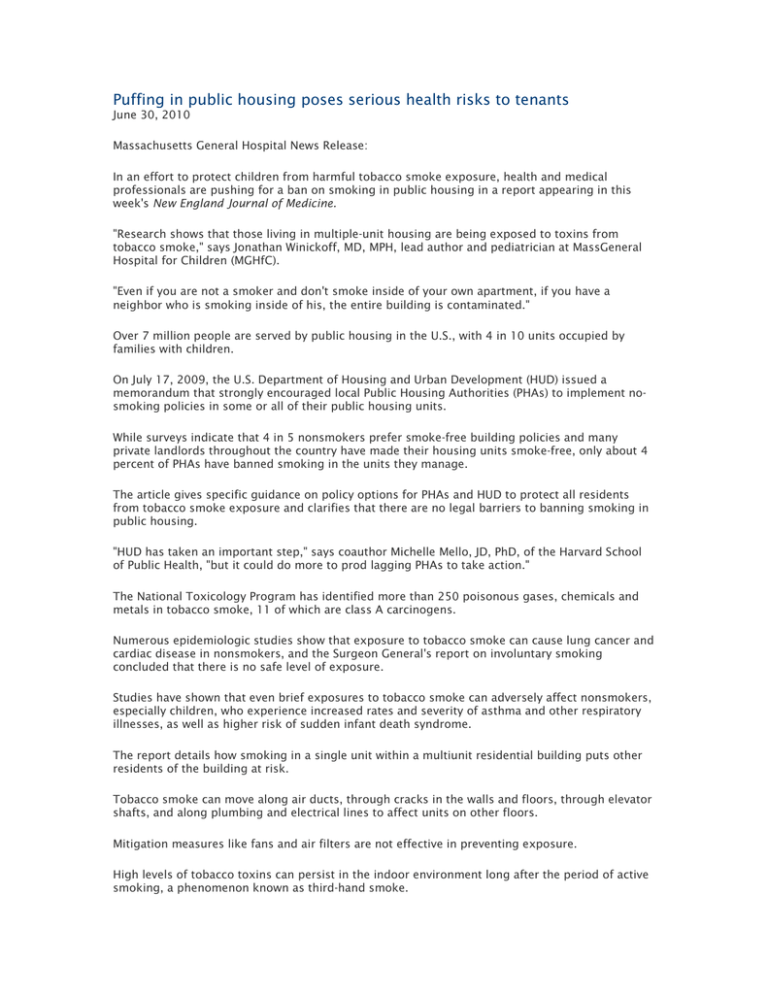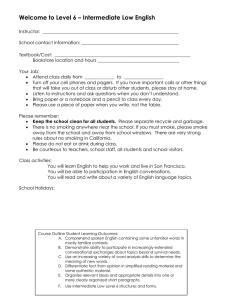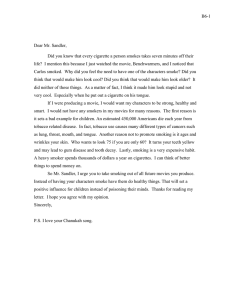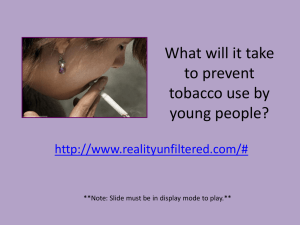Puffing in public housing poses serious health risks to tenants
advertisement

Puffing in public housing poses serious health risks to tenants June 30, 2010 Massachusetts General Hospital News Release: In an effort to protect children from harmful tobacco smoke exposure, health and medical professionals are pushing for a ban on smoking in public housing in a report appearing in this week's New England Journal of Medicine. "Research shows that those living in multiple-unit housing are being exposed to toxins from tobacco smoke," says Jonathan Winickoff, MD, MPH, lead author and pediatrician at MassGeneral Hospital for Children (MGHfC). "Even if you are not a smoker and don't smoke inside of your own apartment, if you have a neighbor who is smoking inside of his, the entire building is contaminated." Over 7 million people are served by public housing in the U.S., with 4 in 10 units occupied by families with children. On July 17, 2009, the U.S. Department of Housing and Urban Development (HUD) issued a memorandum that strongly encouraged local Public Housing Authorities (PHAs) to implement nosmoking policies in some or all of their public housing units. While surveys indicate that 4 in 5 nonsmokers prefer smoke-free building policies and many private landlords throughout the country have made their housing units smoke-free, only about 4 percent of PHAs have banned smoking in the units they manage. The article gives specific guidance on policy options for PHAs and HUD to protect all residents from tobacco smoke exposure and clarifies that there are no legal barriers to banning smoking in public housing. "HUD has taken an important step," says coauthor Michelle Mello, JD, PhD, of the Harvard School of Public Health, "but it could do more to prod lagging PHAs to take action." The National Toxicology Program has identified more than 250 poisonous gases, chemicals and metals in tobacco smoke, 11 of which are class A carcinogens. Numerous epidemiologic studies show that exposure to tobacco smoke can cause lung cancer and cardiac disease in nonsmokers, and the Surgeon General's report on involuntary smoking concluded that there is no safe level of exposure. Studies have shown that even brief exposures to tobacco smoke can adversely affect nonsmokers, especially children, who experience increased rates and severity of asthma and other respiratory illnesses, as well as higher risk of sudden infant death syndrome. The report details how smoking in a single unit within a multiunit residential building puts other residents of the building at risk. Tobacco smoke can move along air ducts, through cracks in the walls and floors, through elevator shafts, and along plumbing and electrical lines to affect units on other floors. Mitigation measures like fans and air filters are not effective in preventing exposure. High levels of tobacco toxins can persist in the indoor environment long after the period of active smoking, a phenomenon known as third-hand smoke. Tobacco toxins from smoke are deposited on indoor surfaces and reemitted in the air over a period of days to years, and are found on rugs, furniture, clothing, and floors, all surfaces that children crawl and play on. While it is clear that second- and third-hand smoke are inimical to the health of nonsmokers in multiple housing units, the authors note, there are challenges facing public housing authorities, landlords and nonsmokers. Any addiction is difficult to overcome and a ban would put pressure on tenants addicted to nicotine, and could raise concern over how to deal with tenants who continued to smoke inside their building. "Any no-smoking policies within PHAs would need to be accompanied by clear instructions on how residents can access evidence-based smoking-cessation resources," says coauthor Mark Gottlieb, JD, executive director of the Public Health Advocacy Institute at Northeastern University School of Law. Currently most state Medicaid programs do not cover comprehensive tobacco-dependence treatments, a situation that may change with an increased emphasis on tobacco control in healthcare reform. However, right now, free smoking cessation services are available in all 50 states though their smoking quitlines. "Rather than prohibiting smokers from inhabiting public housing units, prohibiting the act of smoking on the premises would minimize the ethical concerns relating to a smoking ban," says Mello. "This type of policy would encourage smokers to quit, since only those who continued to smoke on the premises would be required to move out." Creating and maintaining smoke-free living space that encourages smoking cessation not only provides a healthy environment for children as they grow, it discourages them from picking up the habit, Mello explains. "When children see smoking in and around their homes, it normalizes the behavior for them. Research shows that no-smoking policies in the home lead to lower smoking initiation rates by teens." Americans living below the poverty level are 1.6 times more likely to smoke; adopting a smokefree policy in public housing units encourages inhabitants to "fight back" against the intense tobacco marketing that exists in low-income neighborhoods. "As we move forward and further explore public housing policy, it is important to remember that the status quo is not acceptable for America's children," says Winickoff. "Each child deserves a healthy start, and we can help provide this by encouraging smoke-free home environments." About Harvard School of Public Health Harvard School of Public Health is dedicated to advancing the public's health through learning, discovery, and communication. More than 400 faculty members are engaged in teaching and training the 1,000-plus student body in a broad spectrum of disciplines crucial to the health and well being of individuals and populations around the world. Programs and projects range from the molecular biology of AIDS vaccines to the epidemiology of cancer; from risk analysis to violence prevention; from maternal and children's health to quality of care measurement; from health care management to international health and human rights. About The Public Health Advocacy Institute The Public Health Advocacy Institute is a legal research center at Northeastern University School of Law that focuses on public health law. PHAI's goal is to support and enhance a commitment to public health in individuals and institutes who shape public policy through law. PHAI is committed to research in public health law, public health policy development; to legal technical assistance; and to collaborative work at the intersection of law and public health. Contact: Valerie Wencis, 617/726-0274, vwencis@partners.org





